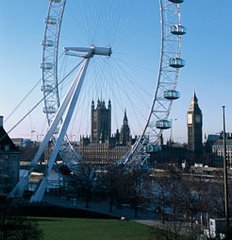The London Marathon is one of the biggest sporting events in the world. Over half a million people line London's streets to cheer on the runners, and many millions more watch the event on TV. On Sunday 22 March, a record 36,396 people started the marathon. By 6pm 35,674 had crossed the finish line - another record, by 400 people.
But how did it all start? The marathon has been run since 1981, when nearly 7,500 althetes took part out of more than 20,000 who applied. It was the brainchild of British althlete and former Olympic champion Chris Brasher, who had just run the New York Marathon. Inspired by the way the runners, spectators and organisers had pulled together to make New York's marathon such a great event, Brasher wrote an article for The Observer wondering if such a thing could ever happen in London.
The feature received such a positive response that Brasher and Donald Trelford, the then editor of The Observer, decided to take the matter further. They met with the Greater London Council, the Metropolitan Police and athletics' governing bodies in 1980 and Brasher made various trips to the US to study the organisation and finance of big city marathons such as those in New York and Boston (the world's oldest city marathon).
Brasher put together a budget, and the authorities gave a cautious green light, with £50,000 sponsorship from Giliette and charitable status helping tip the balance. The inaugural race was run on 29 March 1981 and the runners were led home by American Dick Beardsley and Norwegian Inge Simonsen, who crossed the line hand-in-hand, in a deliberate dead heat.
The race is run over 26 miles and 385 yards (42.195 km), the traditional Olympic length. Originally this was to be 26 miles. London was host to the 1908 Olympics and the marathon was to end in front of the royal box, where Queen Alexandria would be watchimg. Continuing the royal theme, the race started at Windsor Castle. A late request from the queen, asking if the starting line could be moved to where it could be seen from the nursery, added the extra 385 yards, and so the tradition was born.
Some London Marathon facts:
Nine people have died running the marathon, including, sadly, one man who died after running this year.
On 19 April 2003 former boxer Michael Watson, who had been told he would never walk again after a fight with Chris Eubank, made headlines by finishing the marathon in six days.
In 2006 Sir Steve Redgrave (winner of five consecutive Olympic gold medals) set a new Guinness World Record for money raised through a marathon by collecting £1.8 million in sponsorship.
The fastest times are 2:05:38 for men (Khalid Khannouchi, USA) in 2002 and 2:15:25 for women (Paula Radcliffe, UK) in 2003.

Links:
The London Marathon

No comments:
Post a Comment